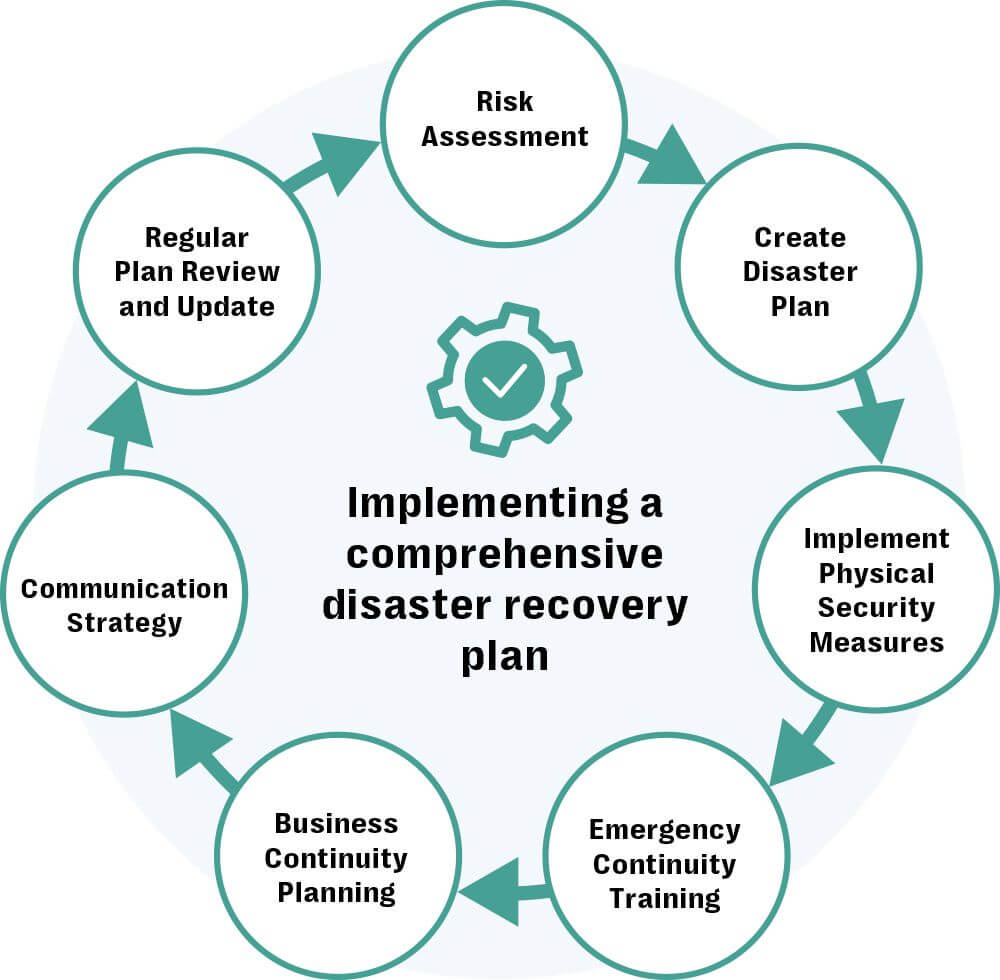As security professionals, you have a firsthand view of how physical security risks are evolving. These threats aren’t just increasing in number. They’re getting smarter — posing new challenges to keeping your people safe and your operations running smoothly. From natural disasters to workplace violence, these threats can halt operations, harm your people, and damage your business.
There’s a growing need for smart solutions. According to ASIS, the global physical security market is expected to reach $70 billion by 2026. But technology alone won’t solve these problems. You need practical strategies that work in the real world, not just on paper. You’ll also need the ability to measure your incident management’s effectiveness. That way, you’re ready to respond quickly — or better yet, stop incidents before they start.
Let’s dig into the top physical security risks your enterprise faces today. We’ll cover practical steps your corporate security team can take to stop them before they cause real, costly damage.
1. Workplace violence
According to OSHA, “Some 2 million American workers are victims of workplace violence each year.” Workplace violence can happen anywhere — from altercations to harassment or intimidation. You’ve likely witnessed how these incidents can shatter morale and disrupt your team’s focus, bringing operations to a standstill.
For security teams, the goal is clear: prevent these physical security risks from happening in the first place. When workplace violence occurs, it can halt production and expose your company to legal and financial risks. U.S. businesses face an estimated $171 billion in costs each year, making proactive measures a necessity, not a luxury.
Workplace violence mitigation strategies:
- Create anonymous reporting channels: Employees need a safe way to report threats or concerning behavior early and are more likely to speak up if they feel protected.
- Provide regular training using real-world scenarios: Ensure your team is prepared to spot warning signs and respond before situations escalate.
- Deploy real-time incident management tools: The ability to centralize data, escalate threats quickly, and respond in real-time helps to prevent small incidents from becoming major disruptions.

For more on how to address workplace violence and protect your team, read our Workplace Violence Prevention Strategies guide.
2. Insider threats
Insider threats — whether from disgruntled employees, careless mistakes, or compromised credentials — are some of the hardest physical security risks to detect. According to the Ponemon, 2023 Cost of Insider Risks: Global study, 55% of security incidents stem from insider threats. Organizations must prioritize strategies to identify and manage physical security risks posed by insiders to minimize potential damages.
These physical security risks stem from individuals with legitimate access to sensitive systems, making them difficult to spot and mitigate. The financial impact of insider threats is substantial, with the reported average cost per incident reaching $11.45 million.
Insider threat mitigation strategies:
- Implement role-based access controls: Limit employee access to only what they need for their roles.
- Monitor for unusual behavior: Use tools that flag irregular activity like odd access times or large data transfers.
- Provide continuous security training: Regular training reduces the risk of negligence and strengthens overall security awareness.
Dive deeper into effectively managing insider threats in our Insider Threat Strategies Guide.
3. Theft & vandalism
Theft and vandalism aren’t just minor annoyances — they disrupt operations, damage property, and eat into your company’s bottom line. In 2023, retailer losses reached $112.1 billion, largely driven by organized retail crime. High-value assets are often the target, leaving your team responsible for preventing damage and ensuring smooth operations.
Theft & vandalism mitigation strategies:
- Enhance perimeter security: Use barriers, proper lighting, and surveillance cameras to deter potential threats.
- Deploy real-time monitoring systems: Immediate alerts from surveillance can enable fast responses to suspicious activity.
- Conduct regular audits: Regular inventory checks help identify missing assets quickly, preventing small losses from escalating.
Explore more on how to protect your assets from theft and vandalism in our Materials Theft Prevention Guide.
4. Supply chain disruptions
Delayed production is only the beginning when it comes to supply chain disruptions. Your business can be halted entirely, cutting into profits and damaging customer trust. Post-COVID, companies have become painfully aware of their supply chain vulnerabilities, as even minor issues now create ripple effects across operations. Additionally, physical security risks such as theft and sabotage can further compromise supply chain integrity, leading to increased costs and delays.
A 2023 survey by Hubs revealed that 76.6% of companies experienced external supply chain disruptions. Whether the cause is natural disasters (see next section), theft, or operational failures, the impact of these physical security risks can cripple your entire organization.
Supply chain disruption mitigation strategies:
- Map out vulnerabilities: Regularly audit your supply chain to identify weak points and critical dependencies.
- Develop backup plans: Ensure you have alternative suppliers and transportation methods ready to maintain operations when physical security risks arise.
- Use real-time tracking tools: Implement real-time tracking to detect issues early and respond quickly to minimize delays.
Explore how you can strengthen your supply chain resilience in our Supply Chain Operations Case Study.
5. Natural disasters
Natural disasters — from earthquakes and hurricanes to floods and wildfires — can devastate your business. With climate change driving more frequent and severe events, corporate security teams face growing challenges in protecting both operations and infrastructure. Addressing physical security risks during these incidents is crucial to ensuring the safety of personnel and maintaining business continuity.
These disasters do more than damage physical assets; they disrupt operations, causing costly downtime that can take weeks or even months to recover from. In 2023, the U.S. experienced 28 weather and climate disasters, each causing over $1 billion in losses. As these physical security risks become more common, being proactive is no longer optional — it’s essential.

Natural disaster mitigation strategies:
- Conduct physical security risk assessments: Regularly assess infrastructure vulnerabilities in disaster-prone areas.
- Create disaster recovery plans: Ensure evacuation routes, backup power systems, and communication protocols are in place.
- Leverage real-time monitoring: Use sensors and weather tracking tools for timely alerts and rapid response.
For more in-depth strategies on protecting your business from natural disasters, read our full post on Natural Disaster Risks for Security Teams.
6. Access control failures
According to a 2023 ASIS research report, two-thirds of organizations reported access control incidents requiring a security response, with 71% experiencing at least five serious breaches annually. In addition to data protection, physical security risks associated with unauthorized access can compromise the safety of personnel and assets within the facility.
Tailgating (61%) and credential sharing (38%) are critical vulnerabilities. This is especially true in industries like healthcare and financial services, where strict access control is essential to safeguard sensitive data and maintain compliance. These incidents expose businesses to financial losses, reputational damage, and regulatory penalties, making effective access control systems critical.
Access control failure mitigation strategies:
- Real-time monitoring: Implement systems that immediately detect unauthorized access attempts, including tailgating or propped doors.
- Regular access audits: Audit credentials frequently to ensure employees only have necessary access and revoke permissions as roles change.
- Integrate access control with surveillance: Advanced surveillance and AI analytics can help detect suspicious access patterns.
Explore how advanced access control systems can safeguard your operations in our article on Access Control Challenges in Manufacturing.
7. Workplace accidents and safety incidents
Workplace accidents can hit hard, not just in lives impacted but in the costs to your business — $167 billion in 2022 alone, according to the National Safety Council. Each injury adds up, with an average of $40,000 per medically consulted incident. Keeping your team safe goes beyond checking a compliance box. The key is to create a secure environment where everyone can focus on their work without unnecessary physical security risks.
Workplace accident mitigation strategies:
- Regular safety audits: Conduct inspections of facilities and equipment to identify hazards early.
- Comprehensive training programs: Ongoing training ensures employees are aware of safety protocols.
- Real-time incident management: Quick reporting systems enable fast responses and thorough investigations to minimize downtime.
Discover how the Corporate Security team at the Manzanillo International Terminal took their safety and efficiency to the next level, preventing workplace incidents.
8. Environmental hazards
Environmental factors like hazardous materials, chemical spills, and poor air quality pose serious physical security risks to employee safety and can halt your operations. These threats are especially common in industries like manufacturing and healthcare, where exposure to harmful substances is frequent. Effectively addressing physical security risks can prevent accidents and reduce liability, creating a safer work environment.
Beyond safety, managing environmental hazards is about maintaining compliance. Regulatory bodies like OSHA hold companies accountable. Even small oversights can lead to long-term health issues, costly operational downtime, and steep regulatory penalties.
Environmental hazard mitigation strategies:
- Strict hazardous materials protocols: Ensure proper storage, handling, and disposal of toxic substances.
- Air quality monitoring: Use systems to detect dangerous levels of pollutants, preventing health risks before they escalate.
- Emergency response plans: Regular drills and clear protocols ensure quick, safe responses to hazardous events.
9. Utility failures
Utility failures — such as power outages, water supply disruptions, or HVAC system breakdowns — can bring operations to a halt, especially in industries reliant on continuous services, like healthcare and technology. While they may seem routine, utility failures can escalate into significant issues.
Not only do disruptions like these impact business continuity, but they also pose physical security risks by compromising safety systems and leaving facilities vulnerable. The result can be equipment damage, data loss, or even jeopardize safety in critical facilities like hospitals or data centers.
Utility failure mitigation strategies:
- Backup power systems: Invest in generators and uninterruptible power supplies (UPS) to prevent downtime.
- Real-time monitoring: Continuously monitor utilities like HVAC and water systems to catch signs of failure early.
- Utility failure response plans: Ensure all teams know their roles during outages, with clear protocols for fast recovery.
Want to reduce your physical security risks?
Your team faces a wide range of physical security risks, from workplace violence to utility failures. With so many risks to manage, you need a solution that helps you stay ahead of incidents, not just respond after they happen.
Resolver’s Incident Management application helps you manage, track, and mitigate incidents efficiently, keeping your people safe and your operations running smoothly. Whether you’re dealing with workplace accidents, environmental hazards, or access control breaches, our comprehensive platform allows your team to take control, ensuring a swift and coordinated response every time.
Request a demo to see how Resolver’s Incident Management solution can help you prevent incidents before they impact your business.
